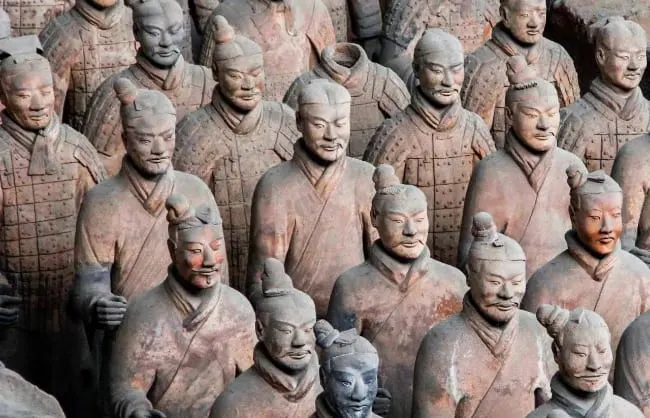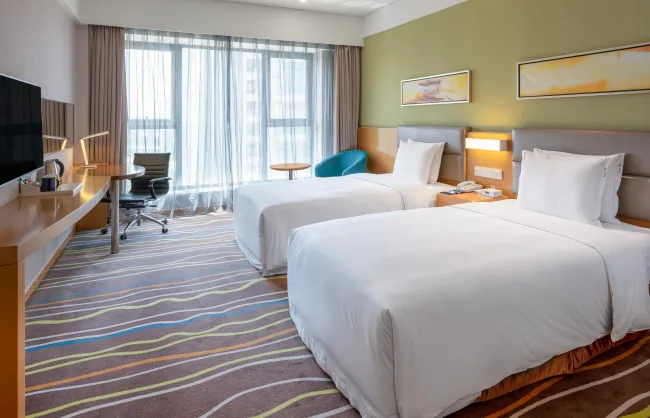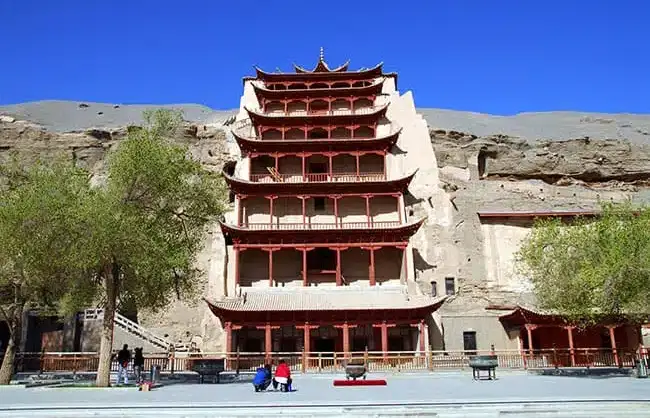Planning a China Silk Road tour is never an easy job considering the diverse destinations it encompasses. It means you’ll need to prepare for transportation and accommodation logistics in different cities, learn about regional customs and cultural etiquette, consider safety factors, and weather variations, etc. To ensure you a smooth and enjoyable Silk Road travel, we collected a series of practical travel tips and advice in this guide. From pre-trip preparations to packing tips and on-the-go explorations, and from safety guidelines to transportation and accommodation tips, we have all the frequently asked questions covered.
Best Times to Visit the Silk Road
The China Silk Road spans a vast expanse, extending from Xi’an to many historically important and naturally stunning destinations. Thus, the best times to visit the Silk Road largely depend on the climate, celebrations, and tourist seasons of your chosen destinations. Generally, the best time to visit most destinations along this ancient route falls between May and October (except some public holidays). This period is when most cities enjoy relatively pleasant weather, and it avoids the harsh winter and frequent sandstorms in early spring.
Summer is the peak season for most popular Silk Road destinations due to the school summer vacation in China. Despite the scorching heat, especially in the desert regions, most cities show clear skies and the most vibrant natural scenery in this season. It is also the season when many tourism activities and festivals are held, such as desert camping and bonfire parties.
September to October in autumn is the time when temperatures cool down and stunning autumn landscapes are presented. The relatively fewer tourists offer a quiet exploration of historical and cultural heritage sites.
Best Times to Major Cities along the Silk Road
- Xian: suitable for year-round travel, spring and autumn are the most comfortable periods.
- Luoyang: April is the best time to catch the Peony Festival. Historical sites like Longmen Grottoes and White Horse Temple are suitable to visit year-round.
- Dunhuang: May to October; visit the desert in the early morning or late afternoon if you travel during the summer months.
- Xining: Summer is the best season to enjoy the beautiful Qinghai Lake.
- Zhangye: September to October is the best time to enjoy the vibrant colors of the Rainbow Mountains.
- Kanas: Best known for its autumn scenery of golden leaves and emerald green lakes. Spring and autumn will reward you with blooming flowers.

What to Bring – Packing Tips
When packing for a travel along the China Silk Road, some major factors you need to take into consideration include climate, culture and regional customs, personal needs, location of your chosen attractions (is it remote areas), and the tour duration (most Silk Road tours typically take 10 or more days). The following packing list has covered the essential items by category.
Documents & Finance
- Passport and visa:Valid passport and visa are necessary when booking a hotel and buying tickets during the trip.
- Bank cards and small cash:Though mobile payment in China is widespread, preparing some small cash is still necessary when visiting remote areas.
- Travel insurance:Just in case of some unforeseen circumstances.
Clothing
- Layered clothing: Layering your clothing is always key given the considerable diurnal and regional temperature variations in this region.
- Comfortable walking shoes: Since many attractions may require extensive walking.
- Quick-dry & Warm clothing: Even in summer, a lightweight waterproof jacket is recommended, especially in high areas or places with large temperature differences between day and night. Quick-dry clothes allow easy cleaning and drying during the long trip.
- Sun-protective clothing & hats: Most cities along the route receive strong sunlight.
- Multi-functional scarf: For sun or dust protection or keeping warm.
Personal Items
- Travel-sized toiletries: Most hotels provide essential toiletries like toothbrushes, toothpaste, shampoo, etc. Bring your own toiletries if you want to be brand-specific, just make sure the bottles fulfill the TSA Restrictions.
- Skincare essentials: The dry air and strong sunlight make it necessary to bring lotions, creams, sunscreen with high SPF, sunglasses, and lip balm.
- Other personal essentials: dental floss, feminine hygiene supplies, hand sanitizer, and shaving supplies.
- Insect Repellent Cream or Spray: Some outdoor areas may be infested with mosquitoes in summer.
Electronics and Charging Devices
- Mobile phone and charger: A portable power bank is essential for long-time outdoor activities. Take an international adapter.
- Camera & memory card: If available, bring your camera to capture endless natural wonders along the Silk Road. Spare batteries are also recommended.
Health and Safety
- Reusable water bottle: Stay hydrated in dry conditions:
- Small first aid kit: With common medications and your personal prescriptions medications.
Practical Travel Gear
- Small and lightweight backpack: For conveniently carrying and organizeing your carry essentials.
- Apps & tools: Apps for language translation and travel guidebooks wiht local culture and highlights.
Accommodation Tips for the Silk Road
Since the route encompasses multiple cities of different levels of economic development, the accommodation options vary largely based on the location. Major cities like Xi’an, Urumqi, Lanzhou, and Qinghai provide more options, with budget, local boutiques, and luxury hotels all available. While smaller cities offer more limited options. Please also note that the services and facilities in star-rated hotels in small and remote areas may not be as good as those in more developed cities.
It is highly recommended to consider the hotel location. If you want to save time and avoid long transportation, then choose hotels near attractions. For example, staying near the Bell Tower in Xian allows you easy access to most landmarks in the city center. Hotels near Dunhuang Echoing Sand Mountain allow you to avoid peak crowds.
Choose local featured accommodations for a deeper connection to local culture. The Silk Road is rich in this kind of options. In Dunhuang, you can try desert camps. In Hemu Village, staying one night in the wooden houses of local Tuwa people offers you a more immersive cultural experience.

Silk Road Transportation
Getting to most cities and areas along the Silk Road is easy. Multiple transportation options are available to ensure you a smooth journey. For intercity transfer and long-distance travel, flights and high-speed trains are convenient and frequent options.
Most people start their Silk Road travel from Xi’an, because of its easy accessibility from most cities in China and its rich historical and cultural heritage. From Xi’an, you can continue your trip to Zhangye, Dunhuang, Jiayuguan, Turpan, Urumqi, Kashgar, or many other cities. Transportation information between these major cities is as below:
- Xian – Zhangye: About 2-3 hours by plane, about 6-6.5 hours by bullet train
- Zhangye – Dunhuang: About 4.5 hours by bullet train, no direct flights
- Dunhuang – Jiayuguan: About 2.5 hours by bullet train, no flights
- Jiayuguan – Urumqi: About 6.5 hours by bullet train, about 2 hours by flights
- Jiayuguan – Turpan: About 5.5 hours by bullet train, no flights
- Turpan – Urumqi: About 1 hour by bullet train, no flights
- Urumqi – Kashgar: About 2 hours by flights
Some attractions along the Silk Road are far from city areas, with no or few public transportation options available. Private vehicle transport becomes essential when traveling around these areas. For more convenience and flexibility, you can also contact us to customize your ideal Silk Road trip based on your requirements, with private transfers and tickets booking services all included.
Safety Tips
A China Silk Road tour is undoubtedly safe, and people from different ethnic groups are all hospitable. Below are some weather and health considerations while traveling along this ancient route.
- Try to plan ahead: Due to the diverse terraces, landscapes, culture and history along this route, planning ahead is always recommended. You can research local weather, cultural customs and general history background to facilitate a better and smooth journey.
- Follow rules at attractions: Adhere to all instructions and warning signs at attractions. For example, you must follow a guide to enter the Mogao Caves. When visiting the desert scenic areas, don’t act alone.
- Pack suitable clothing: To adapt to the diverse climate of different destinations, and great temperature fluctuation between day and night. Also, take sun protection into consideration.
- Health precautions: Carry essential medications and be cautious with food hygiene. Avoid touching wild animals during the journey.

Cultural Considerations
You can expect to encounter a diverse array of ethnic groups and rich cultural heritage while traveling along the Silk Road. Below are some considerations to help you respectfully immerse in local culture.
- In Xinjiang, most people are Muslim, and in Qinghai, many people believe in Buddhism. So you’d better dress modestly when visiting these places, especially when visiting some religious sites.
- Considering the privacy or belief concerns, it’s more polite to seek permission if you want to photograph local people or some special religious events.
- Bargaining for handicrafts or souvenirs in the markets is ok since it is part of their market culture. But, excessively low offers may be considered impolite. And, if you have no intention of buying, don’t try to bargain.
- Expect to meet various people from many different cultures during your trip. Having an open mind makes it easier for you to enjoy the trip and helps you to understand the cultural differences.
Other Tips for Traveling Silk Road: Payment, Shopping, and Time Difference
Payment:
Mobile payment is widespread in China currently. Alipay and WeChat Pay are the two most popular payment apps that can be used in all cities along the Silk Road. But we still recommend preparing some Chinese Yuan (CNY) on hand, in case certain scenic spots only accept cash or the bad mobile signal in some rural areas. Credit cards are not widely accepted in rural areas.
Shopping:
For many travelers, shopping is a good method to delve into local culture and life. The featured handicrafts and souvenirs on Silk Road include Xinjiang carpet, ethnic clothing, silk products, Hetian jade, dried fruits, and replicas of Terracotta Army or Dunhuang murals. In the traditional markets, bargaining is common, just remember to negotiate reasonably.
Time Difference:
The entire China uses Beijing Time (UTC+8). From the east starting point of Xian to the western regions in Xinjiang (geographically closer to UTC+6), all transportation schedules and daily activities are adjusted according to Beijing Time. When traveling in the far west Xinjiang, you may experience a relatively “delayed” time. Thus, daily routines in Xinjiang are slightly different to accommodate the local sunrise and sunset times. Usually, the morning working time runs from 10:00 AM to 2:00 PM, while the afternoon working time runs from 4:00 PM to 8:00 PM.
How Long to Plan for a China Silk Road Trip?
Typically, most travelers spend about 10-14 days on their China Silk Road tours, to cover the most classic destinations, including Xian, Zhangye, Jiayuguan, Dunhuang, Turpan, Urumqi, and Kashgar. While you can flexibly customize your private Silk Road tour according to your preferred cities, budget, and time availability.

4-7 Days:
If you are limited in time or just want to visit several destinations, we recommend planning a quick tour of about 6 days. In this time frame, you can cover 2-3 key destinations, like Xi’an, Dunhuang, Jiayuguan, or Xining. Alternatively, if you have visited these classic destinations previously, consider adding some off-the-beaten-path destinations to your bucket list this time, like Zhangye, Xiahe, Wuwei, etc.
Recommended 4-7 days tours:
- 4 Days Xian-Lanzhou-Xiahe Tour by Train
- 5 Days Hexi Corridor Silk Road Tour of Lanzhou-Wuwei-Zhangye
- 5 Days Highlights Silk Road Tour: Xi’an & Dunhuang
- 7 Days Silk Road Tour from Xi’an to Dunhuang by High-speed Train
10-12 Days:
This time frame is enough to cover some core sections or some of the most iconic destinations and attractions on this route. You can explore at a leisurely pace and gain a deeper insights into its cultural heritage and natural marvels.
Recommended 10-12 days tours:
- 10 Days Silk Road Tour: Dunhuang-Jiayuguan-Zhangye-Xining-Lanzhou
- 12 Days Essential Silk Road Group Tour from Xi’an to Urumqi
14+ Days:
If time permits, we always suggest spending more time enjoying a Silk Road trip far beyond its iconic cities. With more than 14 days, you can cover more highlights of this ancient route, delve into more lesser-known places, and have more time to experience authentic local life.
Recommended over 14 days Silk Road tour packages:









